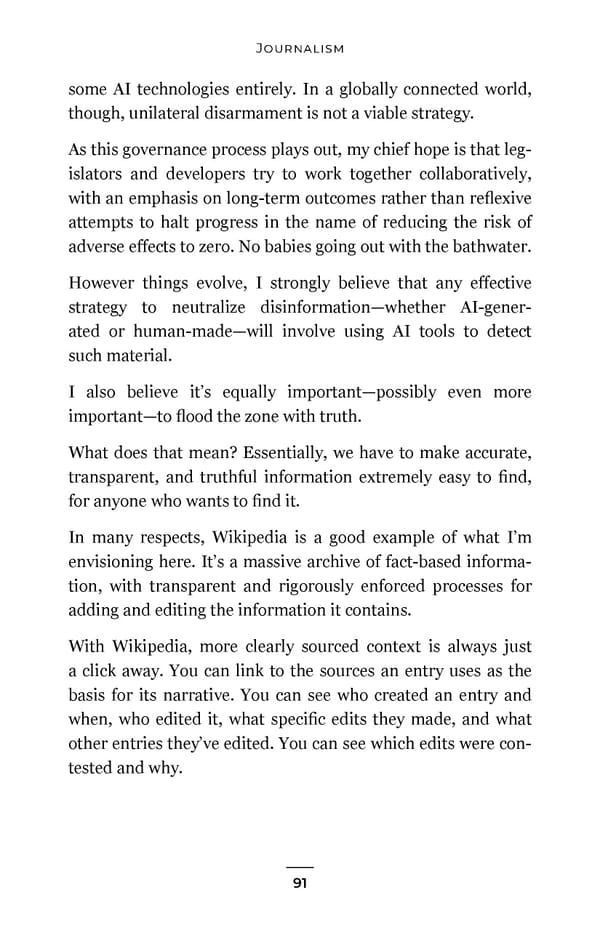Journalism some AI technologies entirely. In a globally connected world, though, unilateral disarmament is not a viable strategy. As this governance process plays out, my chief hope is that leg- islators and developers try to work together collaboratively, with an emphasis on long-term outcomes rather than reflexive attempts to halt progress in the name of reducing the risk of adverse effects to zero. No babies going out with the bathwater. However things evolve, I strongly believe that any effective strategy to neutralize disinformation—whether AI-gener- ated or human-made—will involve using AI tools to detect such material. I also believe it’s equally important—possibly even more important—to flood the zone with truth. What does that mean? Essentially, we have to make accurate, transparent, and truthful information extremely easy to find, for anyone who wants to find it. In many respects, Wikipedia is a good example of what I’m envisioning here. It’s a massive archive of fact-based informa- tion, with transparent and rigorously enforced processes for adding and editing the information it contains. With Wikipedia, more clearly sourced context is always just a click away. You can link to the sources an entry uses as the basis for its narrative. You can see who created an entry and when, who edited it, what specific edits they made, and what other entries they’ve edited. You can see which edits were con- tested and why. 91
 Impromptu by Reid Hoffman with GPT-4 Page 97 Page 99
Impromptu by Reid Hoffman with GPT-4 Page 97 Page 99